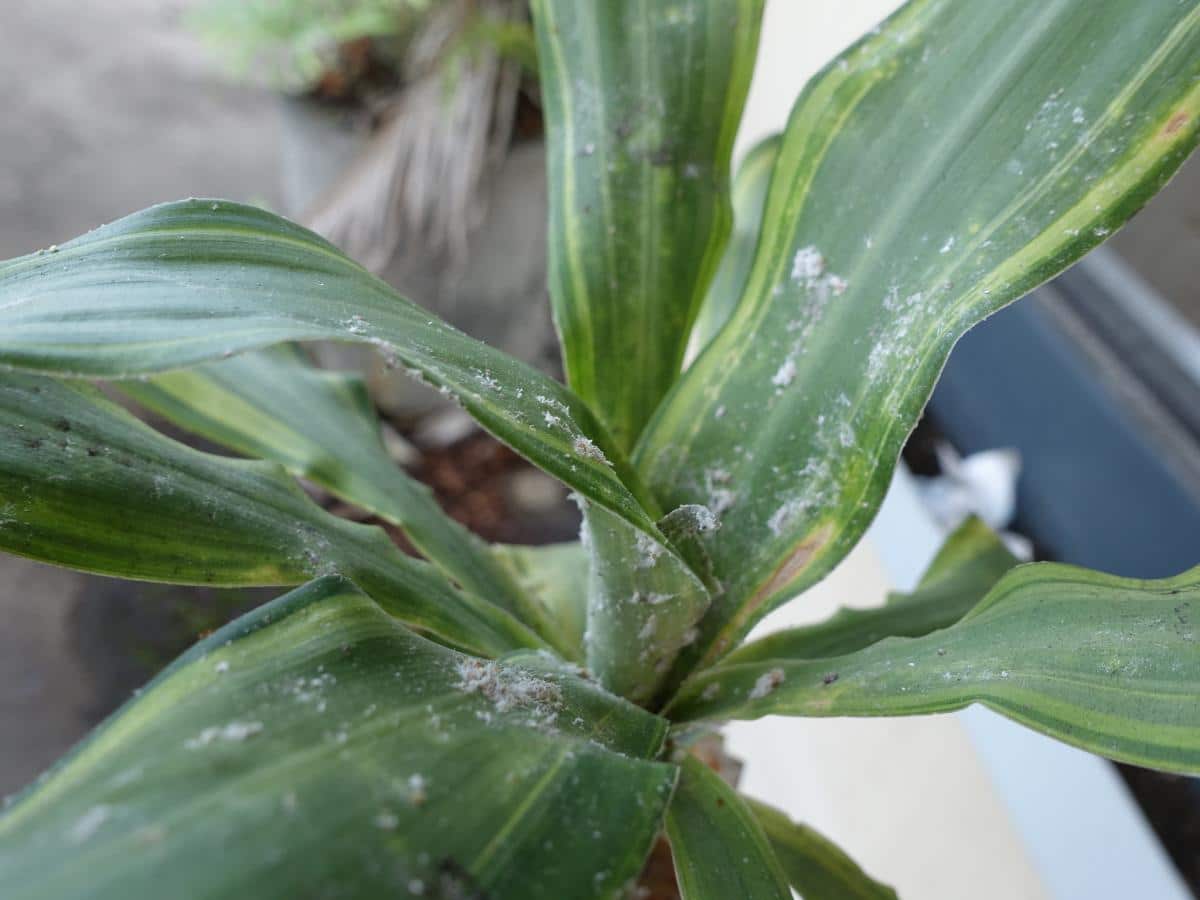
Image – Flickr / Scot Nelson
The drácenas are bushes or trees depending on the species that, if there is something good about them, is that they do not usually have as many pests or diseases as other plants. In fact, that is one of the main reasons why they are so loved, since you do not have to be very aware of them. But that doesn’t mean they can’t have problems.
Moreover, it is very important to control watering a lot so that their roots do not suffer, and avoid leaving them outside if it is cold so that their leaves do not rot in the snow. So, next we are going to explain what are the pests and diseases of dracaena.
Although it is an easy plant, if a mistake is made in cultivation or if it is kept in a place where the conditions are not the best, it may be affected by:
Pests

Image – Wikimedia / Whitney Cranshaw
Our mealybugs They are common, especially in summer and especially if the plant is very thirsty. Others that are also sometimes seen are the Red spider and trips. These pests settle on the leaves, near the nerves, where they absorb the sap, so we can see discolored spots on them.
As the dracenas have leaves that are usually wide, we can clean them with a cotton soaked in neem oilalthough if the pests are widespread it will be better to use a multi-purpose spray insecticide.
Diseases
They are not common, unless it is being watered too much, in which case pathogenic fungi would appear and oomycetes, such as phytophthora, which would damage the roots, making them first turn brown and finally black, that is, unusable.
These microorganisms are difficult to detect when they attack the roots, but There are signs to which we have to be alert:
- The earth remains moist for a long time, and mold can appear
- Leaves have yellow and/or brown spots on their edges
- Branches ‘thin out’ and/or rot
What to do is change the substrate as soon as possible for a quality one that is light, eliminating the parts that are soft and with a bad appearance using scissors previously disinfected with soap and water.
Other problems

You may have other problems, such as the following:
Excess of water
When you water too much, plants turn yellow and then brown, starting with the old leaves. Also, the soil will look very wet and may even have verdina. To recover your dracaena, you have to not only water it less, but also take it out of the pot and wrap the earthen bread with absorbent paper.
Keep it like this for one night, in a room without drafts, and then plant it in a new container with holes in its base and universal growing medium. It should also be treated with a systemic fungicide, such as this.
Lack of water
The leaves that will get worse first will be the newest, that is, the central ones. Although there are some species of Dracaena that resist drought, there are others such as D. massangeana (water stick) that you will have to water more often: two or three times a week during the summer, and once a week the rest of the year. anus.
If in doubt, use a soil moisture meter as this, so you will know when you have to rehydrate it.
Burns
Whether caused by the Sun or light coming through the window, they are brown spots that appear from one day to the next, and only on the most exposed leaves (those that are below them do not usually suffer damage, unless some solar ray has hit them, of course).
In these cases, what is done is to move it to a more protected area.
Dry ends due to drafts or cold
When it is placed near the air conditioner, fan, or in a narrow corridor that we often pass through, the tips dry out.. It is not good to put them in these places, since their leaves spoil quickly. Nor should they be placed a few centimeters from a wall, since if they were, the leaves would rub against the wall or wall, and they would also turn brown.
Furthermore, dracenas are not resistant to cold, much less to frost. Of the most common and easy to get species that there is in Spain, only the dracaena draco withstands up to -3ºC without suffering damage. But even she can have a rough time her first year away. Therefore, if the temperature drops below 0º in your area, it will be better to grow it at home.
As you can see, the Dracaena is a plant that can be very easy to care for, but it is important to bear in mind that it needs a lot of light and a light soil that facilitates the drainage of water. In addition, it must be protected from cold and frost so that it does not have problems.

One thought on “Dracaena: pests, diseases and other problems”